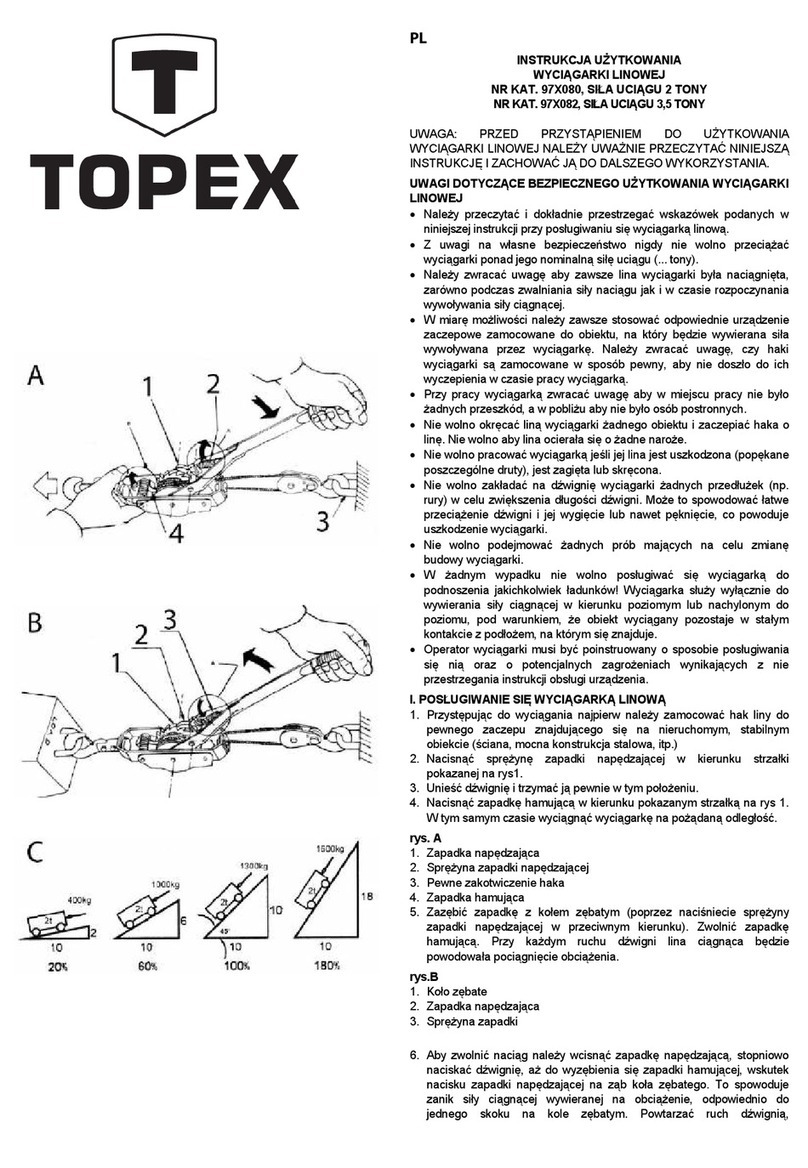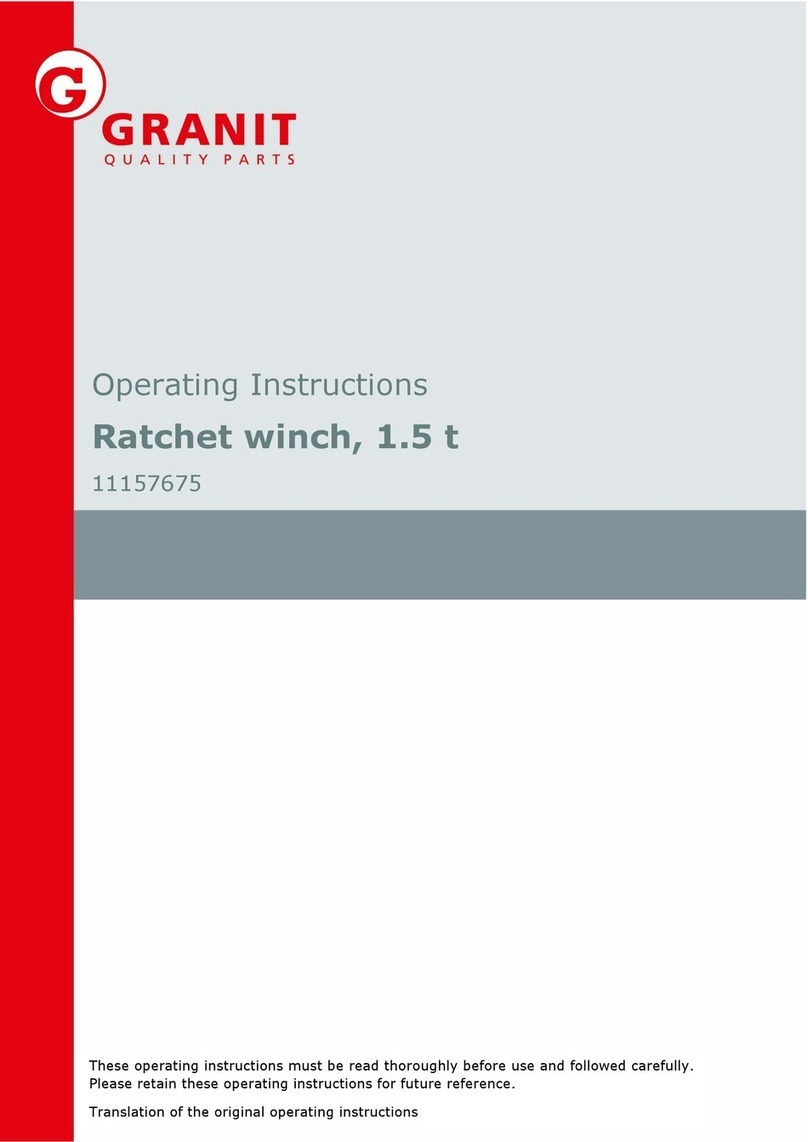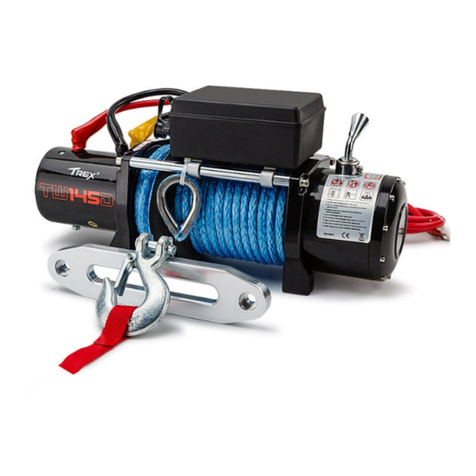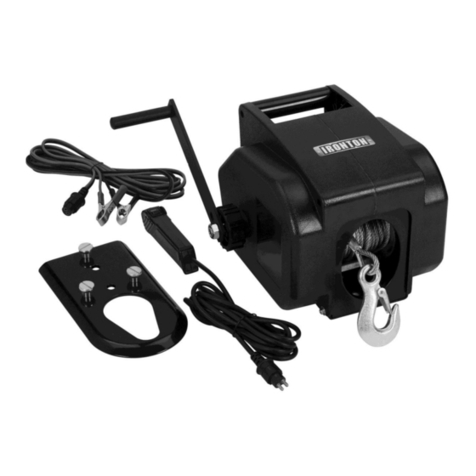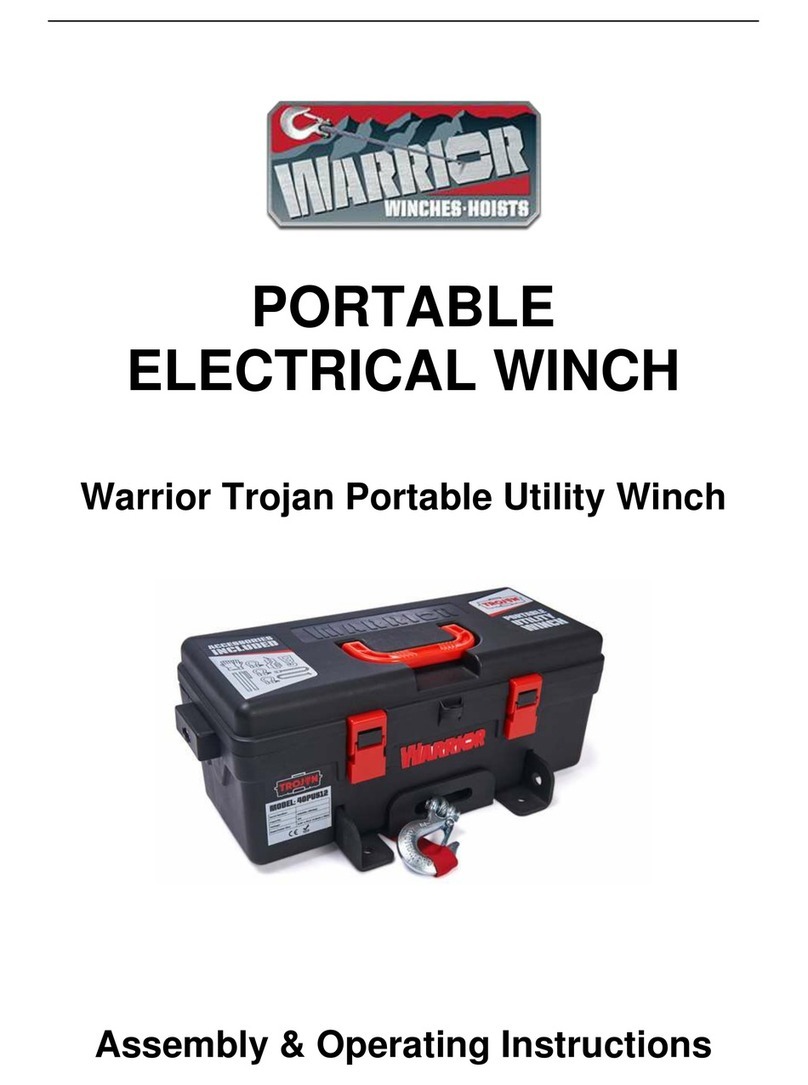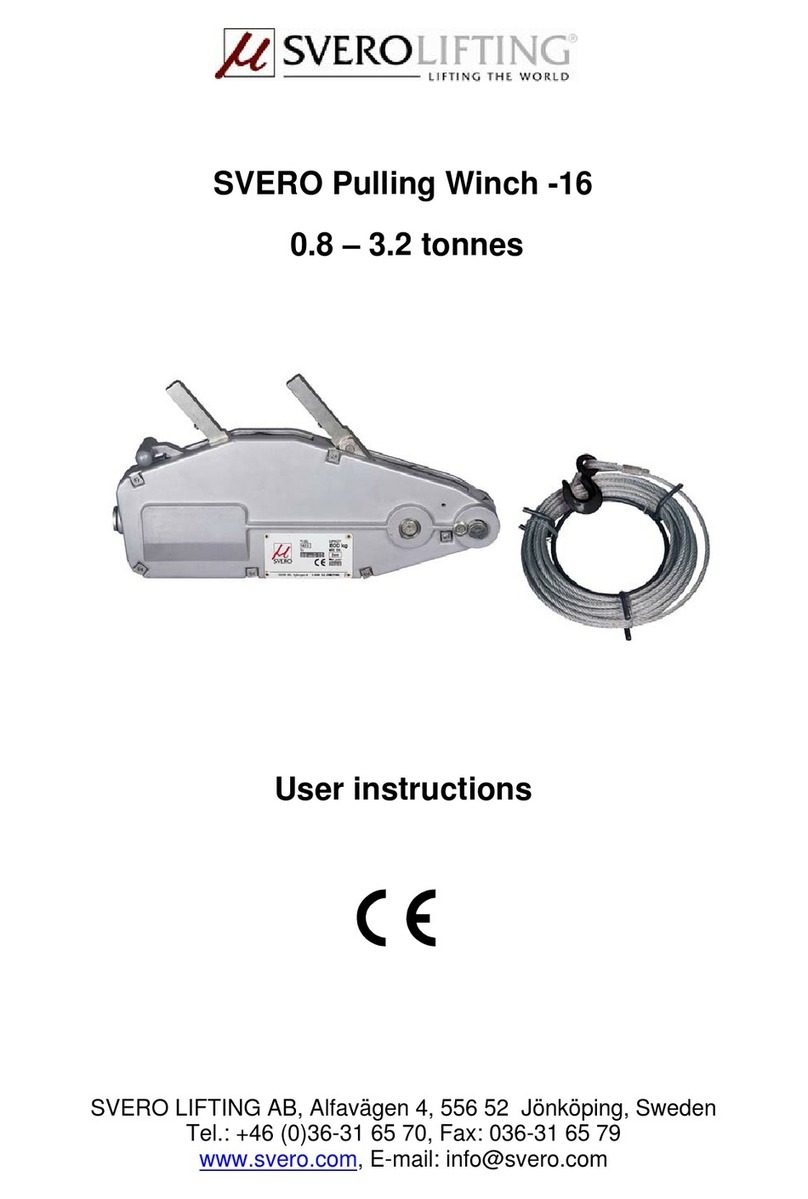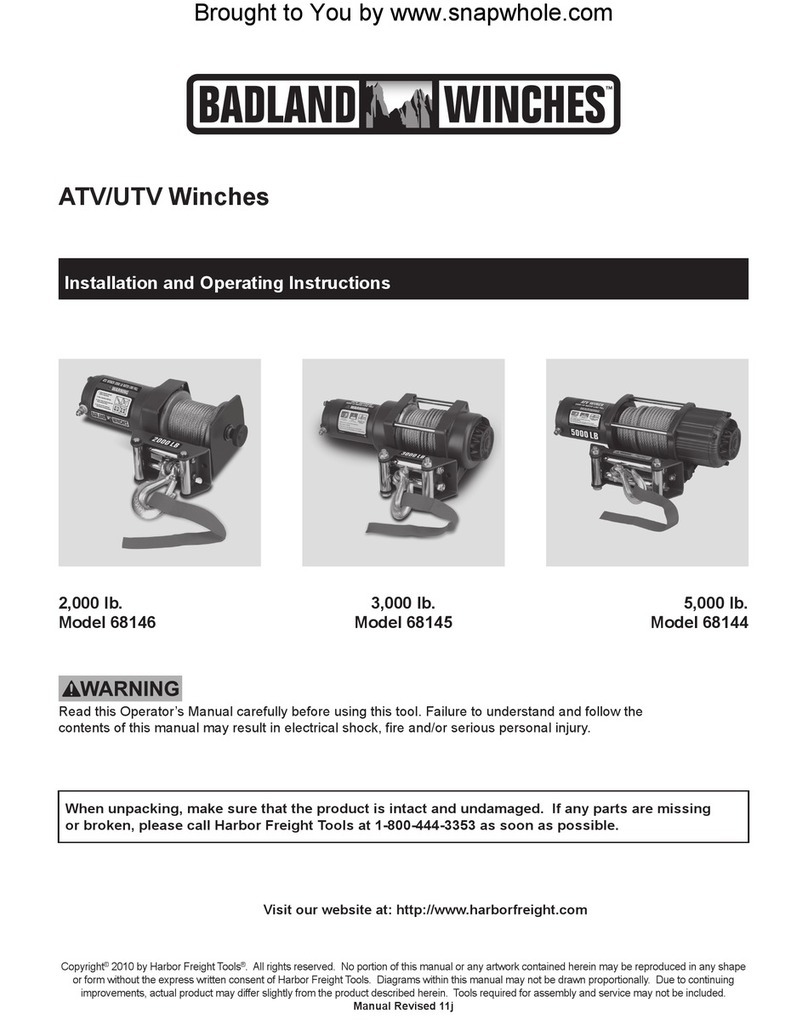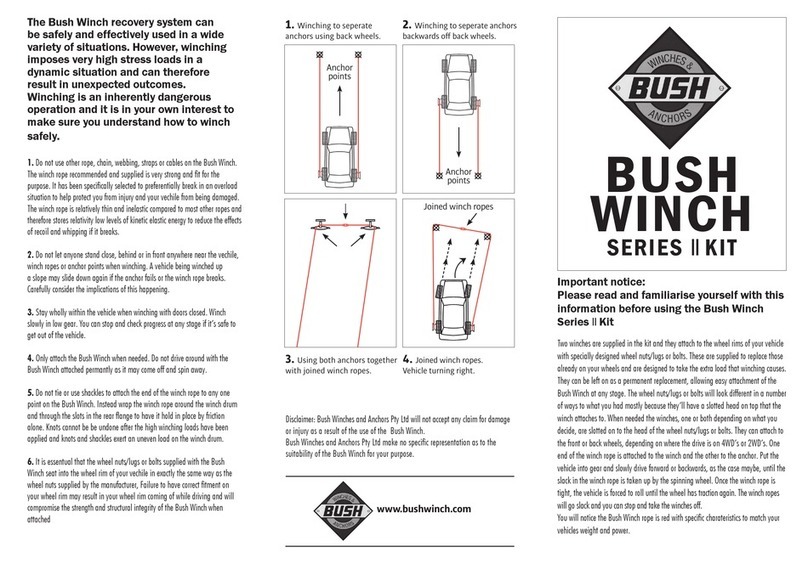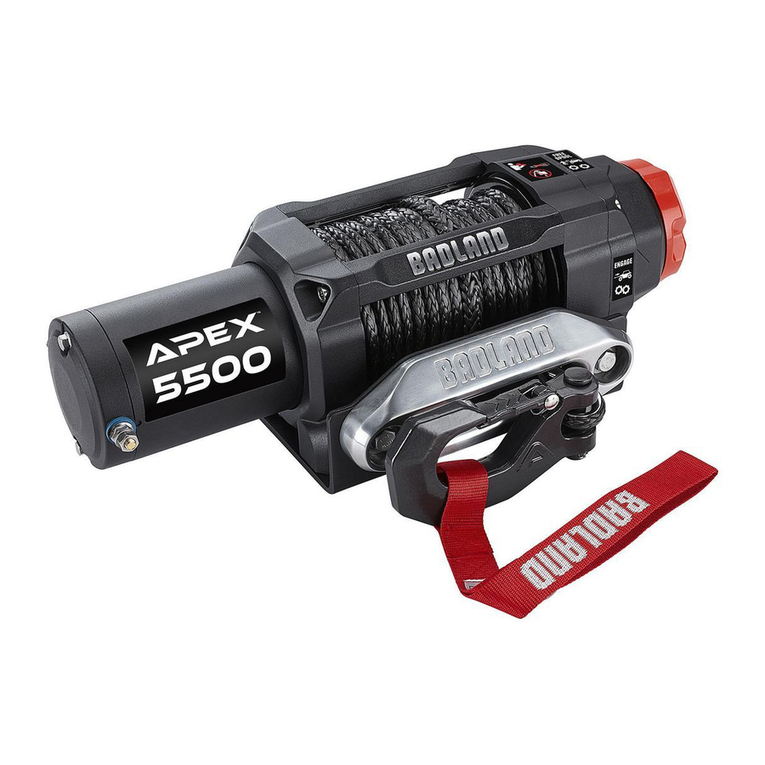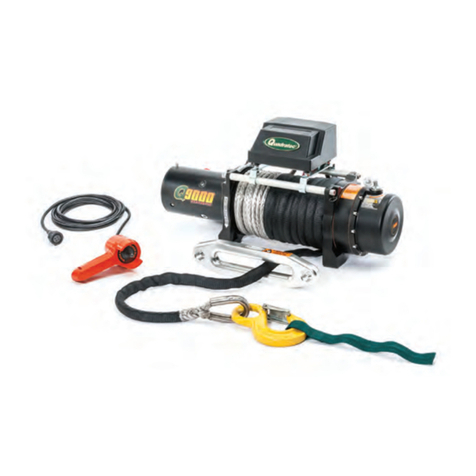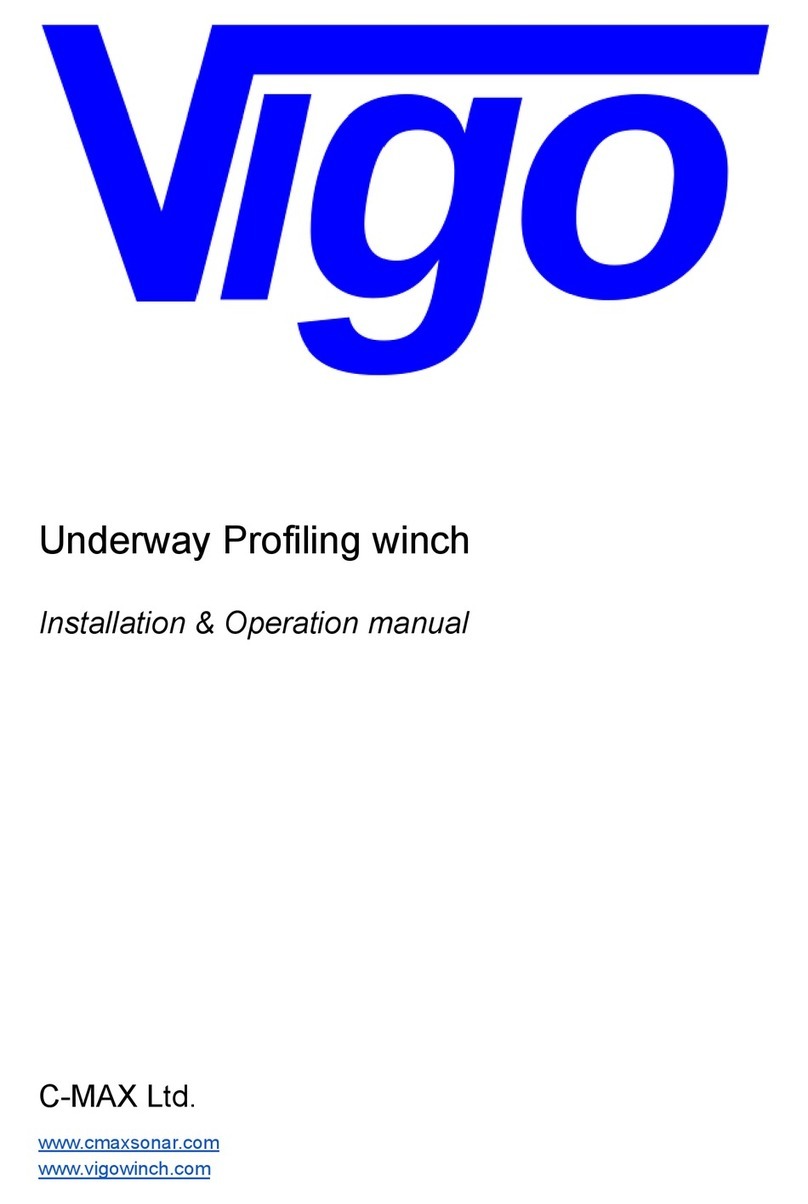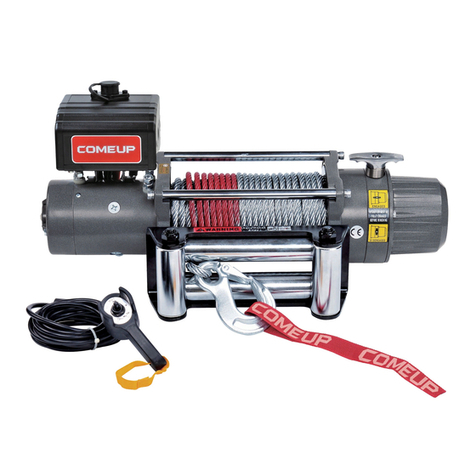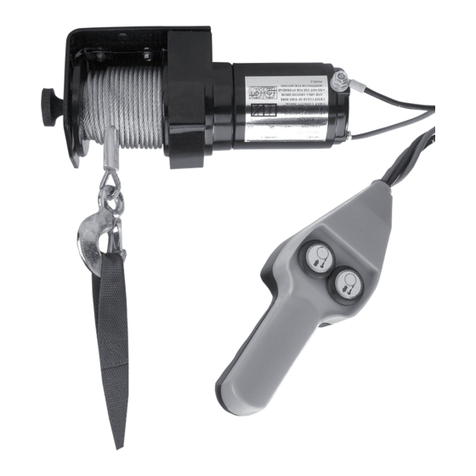Choose a mounting location that can support the winch and rated load capacity.
Do not weld mounting bolts
Use supplied power cords and wire rope listed in manual only. Do not use thinner/longer cables
or link multiple cables together.
Keep hands clear of winch rope, hook loop, hook and fairlead opening during installation,
operation, and when spooling in or out.
Wrap the wire rope under 500 lbs. of tension before use. Otherwise, the wire rope may bind
during operation.
Do not route electrical cables near sharp edges or parts that will move or become hot.
Ventilate area well before and while working on battery. Explosive hydrogen gas can
accumulate and explode when ignited by a spark or open flame.
Only connect to a clean, corrosion free battery.
Remove all jewelry and metallic objects before working near battery.
WINCHING SAFETY
Inspect winch rope, hook, and slings before operating winch. Frayed, kinked or damaged winch
rope must be replaced immediately. Damaged components must be replaced before operation.
Do not maintain power to the winch if the motor stalls. Verify the load is within the rated capacity
for the wire rope layer. Make sure the battery is fully charged. Use double line rigging whenever
possible.
Do not engage or disengage clutch while under load.
Always ensure hook latch is closed and not supporting load.
Never apply load to hook tip or latch. Apply load only to the center of hook.
Never use a hook whose throat opening has increased, or whose top is bent or twisted.
Keep clear of fairlead when operating. Do not try to guide wire rope.
Do not place any fingers through the hook. Fingers may be caught and get pulled into the
fairlead or drum. Use the included strap to hold the hook instead.
Stay out of the direct line that the wire rope is pulling. If it slips or breaks, it will create a whiplash
effect. Utilize a winch dampener to help absorb the force released if the wire rope breaks.
Do not use for overhead hoisting. This winch is intended to be used for pulling only.
Use a spotter to assist you in ensuring that it is safe to operate the winch. Make sure the spotter
is out of the way of the vehicle and the wire rope before activating the winch.
Do not use the hand crank, if equipped, to assist the winch.
Do not use vehicle to pull on the wire rope and “assist” the winch.
Do not use to transport people or animals.
Disconnect battery cables before working near the wire rope, drum, fairlead or load, to prevent
accidental starting.
Keep wire rope straight to avoid kinking the wire rope.
Keep children and bystanders away while operating.
Hook onto the object using a pulling point, tow strap or chain. Do not wrap the wire rope around
the object and hook onto the wire rope itself.
Do not use a recovery strap while winching.
Secure the load after moving. Do not lock the mechanism.
